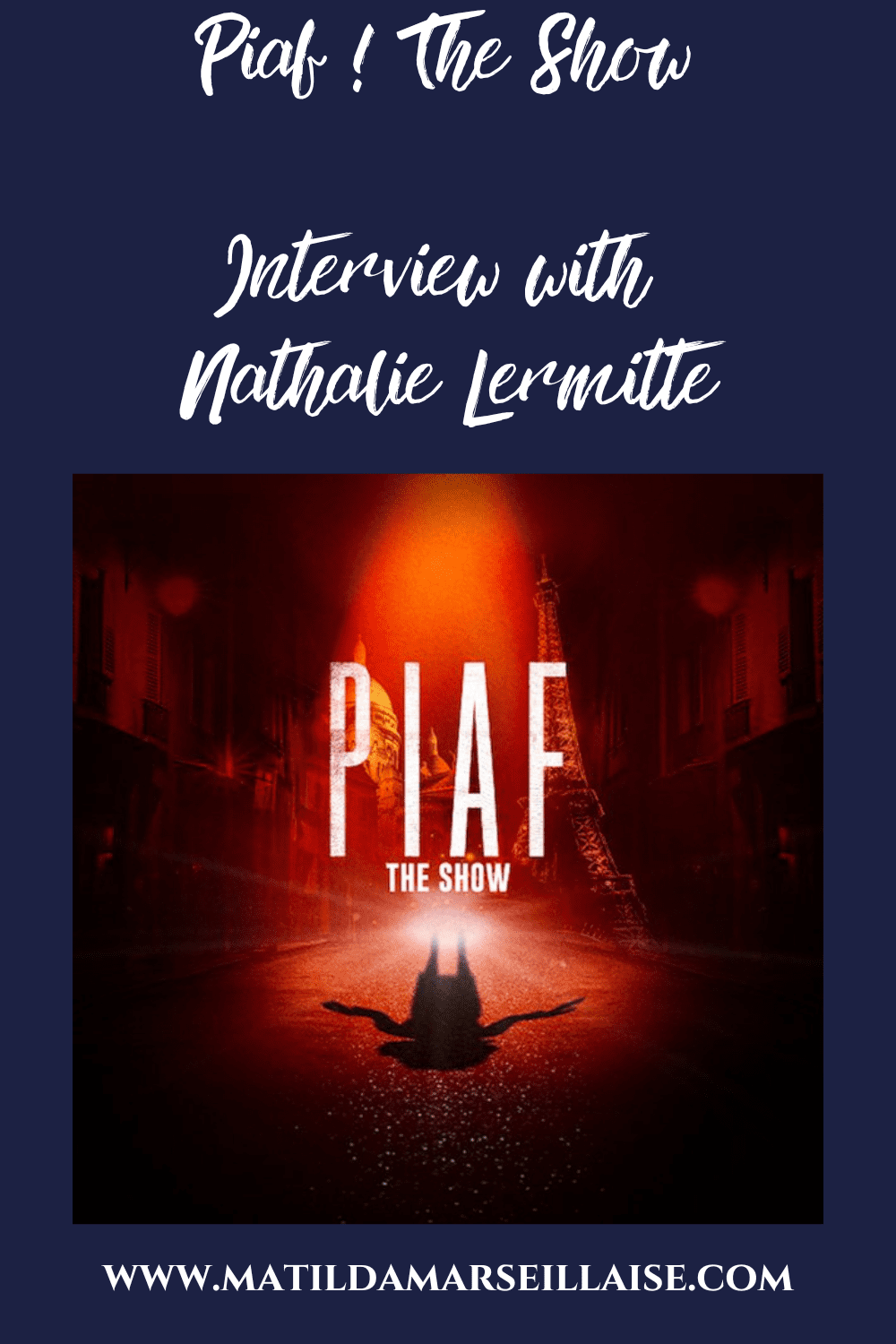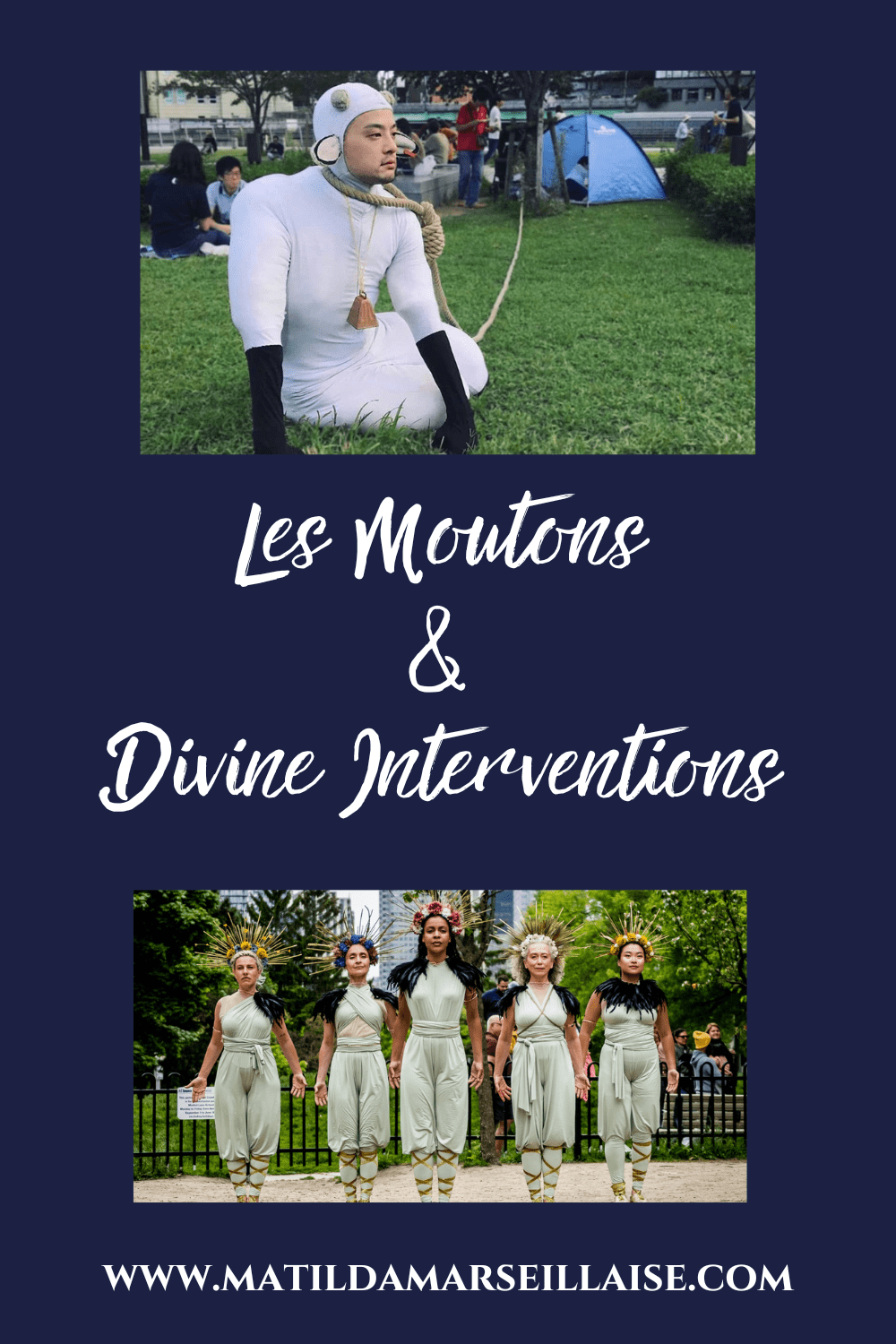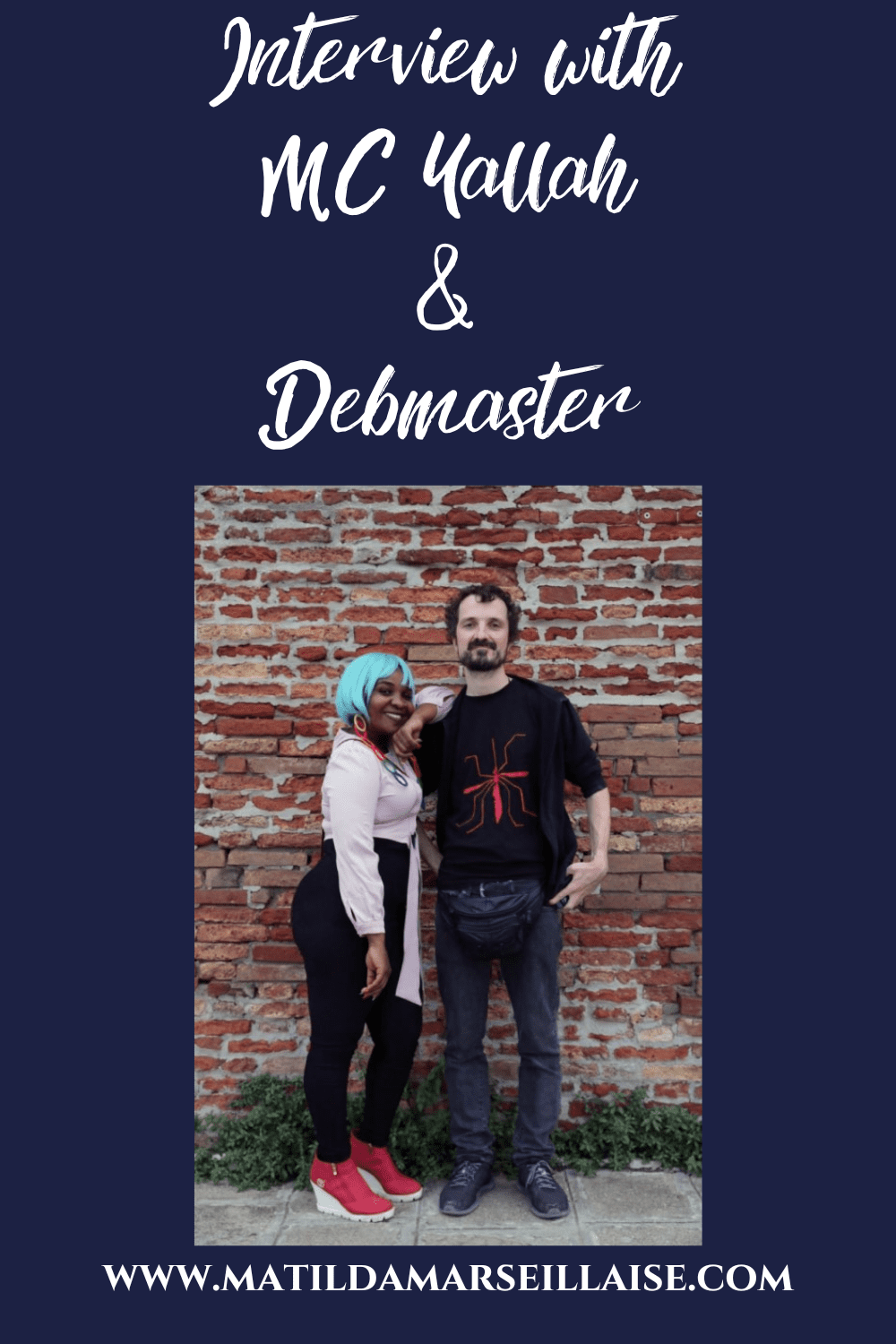The first Australian major survey of French contemporary artist, Camille Henrot’s works is currently being shown in a free exhibition at the NGV in Melbourne called Camille Henrot: is Today Tomorrow. We had a chat to Pip Wallis, curator of the Camille Henrot: is Today Tomorrow exhibition currently showing at NGV a few weeks ago before it opened.


Photo: Tom Ross
Pip Wallis, could you tell us a little bit about your role both as a curator of contemporary art as well as the curator of this Camille Henrot: is Today Tomorrow exhibition?
As curator of contemporary art, I’m working with artworks from 1980 onward to today, Australian and International, and I work with both exhibitions and the collections; works with that we acquire into the collection, collection displays, permanent collection galleries and also on curated exhibitions of loaned new works and commissioned works. Working quite closely with living artists, writing publications, delivering public programs and facilitating the relationship between the artist, the artwork and our audiences.
How did you get into that?
I studied Art History and French at Melbourne Uni, where I then did a Masters in Art Curatorship . I worked in non-profit contemporary art spaces in Australia and overseas and then took up this job about five years ago.
Have you always been interested in art?
Yes. I knew pretty early on that’s where I wanted to spend my time and my life. Though I was interested in making when I was younger, I became much more interested in thinking and writing and reading about art than making it and being curator seemed like the right role for me. I like to work closely with others: working in contemporary art allows me to do that given the artists are still alive unlike in more historical curatorial work.
Which is beneficial, because you can actually ask them directly where they’re going with a particular piece. But I guess it might also be nerve wracking because, you know, people can write about the Impressionists and none of them are here anymore to see what we’re writing about them.
It’s more a constant process of making sure that artists’ voices are heard rather than me historising them. It’s about bringing their voice to the fore. So, it’s more of a facilitating role in that way.

Photo: Courtesy of Camille Henrot
© Camille Henrot
Moving onto Camille Henrot, why is her art important?
Henrot has captured the attention of international audiences because she’s able to use a mechanism that I think is about being very specific and universal at the same time. Her works often spring from a seed of research that is very particular but she’s able to demonstrate how that is a collective societal dynamic rather than particular to her or the individual. Her works feel both intensely intimate – in that we feel personally implicated – and encompassing of shared experiences. Her work is very relevant to a globalized society and to currents that we see moving through the world as a whole, such as issues of authority, privacy, and how we manage the anxieties of contemporary life.
On her website as well as yours, it says that her art questions “what it means to be at once a private individual and a global subject.” How do the art works in this exhibition question or answer that?
I would say that they don’t answer it, I think that Camille is very careful not to provide tidy answers, and in fact, is deeply disinterested, in answering questions. I don’t think we can find answers in her work. Instead, what we find is intense curiosity. And so rather than provide direction for us, the works in this exhibition will make us wonder about ourselves and about the world. Henrot does that by, exploring a very particular subject that she is fascinated by, which she researches, she dives deep into and engages philosophy and psychoanalysis and literature. She’s able to use those theoretical foundations to draw outward from a particular subject demonstrating its collective relevance. I think that’s how she navigates that space between the private and the global.
Well, I see that Camille Henrot moves between film, painting, drawing, sculpture and installation. Does this exhibition contain each of those mediums?
Yes. The exhibition contains works from 2014 to 2020, and it moves from painting, sculpture, film installation and sound. The exhibition moves through six bodies of work, each giving you a real sense for a particular project before you move into a different body of work. In this way the exhibition explores the different fascinations that Henrot has investigated in that time. It also imparts a sense about how one project has inspired another. You can see the threads that moves between Henrot’s bodies of works.
Are the six different bodies of work shown in chronological order?
No, it’s not chronological. It’s not a linear gallery space. You move in and out of different rooms so there’s no sense of living through time but rather of moving through ideas.
What’s your favorite piece or body of work in the exhibition?
I think that her work The Pale Fox is a very important work in her oeuvre so we’re really excited to show that work. It’s an installation from 2014, which was commissioned by the Chisenhale Gallery in London, which has been shown many times around the world since then at different galleries. It comprises of a room built to a specific size and painted and carpeted blue. It contains over 400 hundred objects collected by Camille over a number of years mainly from online marketplaces like eBay.

The Pale Fox, 2014, installation view, Westfälischer Kunstverein, Münster, 2015.
Commissioned and produced by Chisenhale Gallery in partnership with Kunsthal Charlottenborg, Copenhagen; Bétonsalon – Centre for art and research, Paris and Westfälischer Kunstverein, Münster.
© ADAGP Camille Henrot. Courtesy of the artist, kamel mennour, Paris and König Galerie, Berlin/London/Seoul. Photo: Thorsten Arendt
It essentially attempts to express an impulse that Henrot recognised in individuals, but also in a the institution of the museum following her artist residency at the Smithsonian in the U.S.. She calls the impulse a hoarding obsession. It’s a good demonstration of her interest in psychoanalytic language and in how she applies these concepts to wider societal structures, in this case to talk about an institution. She’s drawing the line between the individual and the institutional. Henrot thinks about this obsession with collecting, this obsession with hoarding as our way of trying to understand the world, our desire to gather knowledge, to feel like we have a sense of control over the unknown. The work is structured according to several different ordering principles.
Those principles see the four walls of the space denoted cardinal points, the ages of man, infancy, youth, adulthood and old age. The four elements (earth, fire, air and wind); then finally four principles of Leibniz, the German philosopher. Camille became interested in Leibniz by reading Gilles Deleuze’s book The Fold which discusses his work and his thinking. By no means do any of the ordering principles succeed: you cannot see clearly where each of these systems begins and end. What you have instead is a huge mass of hundreds of objects and images, that create associative meaning with those four structuring principles and with each other. The work expresses the idea that though we attempt to create order in the world, we will always fail. The work is accompanied by a soundtrack, which is a quite calming ambient sound. Henrot said to me in an interview recently that she wanted to be the soundtrack to feel calming, and slightly anxious making in the way that the as soon as the doctor says “don’t worry this isn’t going to hurt” you know that it will.

The Pale Fox, 2014, installation view, Chisenhale Gallery.
Commissioned and produced by Chisenhale Gallery in partnership with Kunsthal Charlottenborg, Copenhagen; Bétonsalon – Centre for art and research, Paris and Westfälischer Kunstverein, Münster.
Courtesy of the artist, kamel mennour, Paris/London and König Galerie, Berlin/London/Seoul.
Photo: Andy Keate. © ADAGP Camille Henrot.
So how do you go about setting up a room of four hundred objects without the artist there?
Well, happily, because The Pale Fox has been presented lots of times before there are really good installation instructions. So, we work with those and also do a lot of video calls with Camille at her studio and send a lot of photographs back and forth. We are now pretty adept at installing shows without artists on site having mounted the NGV Triennial last year without any of the artists being here. So, our install teams, exhibition management teams and conservators are brilliant at working digitally. It’s disappointing not to have the artist here because they bring the opportunity to have conversations which expand on the work and extrapolate on the ideas of the exhibition.

Contrology 2016
bronze
181.4 x 214.5 x 180.3 cm
National Gallery of Victoria, Melbourne
Suzanne Dawbarn Bequest, 2018
© ADAGP Camille Henrot. Photo: Courtesy of the artist, Metro Pictures, New York and National Gallery of Victoria, Melbourne.
Why did the NGV decide to exhibit the collection of works? And also how did you come to be the first major survey exhibition of her works in Australia?
Henrot’s is a practice that we’ve been watching for some time. We acquired a work by her called Contrology in 2017 for the NGV Triennial. It was exciting to bring her work into the NGV collection and to share her work with Australian audiences. From that point, we’ve acquired a 3D video work, Saturday 2017, which is shown in this exhibition. We felt it makes sense to work together with Camille to mount this exhibition. Her work is admired both within the arts community and by wider audiences, so it makes sense for us to share her work in Australia on this scale for the first time.
We’ve also taken the opportunity to publish the first monograph on Camille published by NGV and Hatje Cantz Germany, which is really exciting, rather than an exhibition catalogue. We’re thrilled that the exhibition has given rise to that publishing project as well.
Please excuse my naiveté. But the monograph is – so you’re saying instead of an exhibition catalogue showing just the pieces that you’re including in the exhibition – is this more basically a book about her whole career? Is that what a monograph is?
Yes, an exhibition catalogue deals just with that exhibition. It would only include works in that exhibition. Whereas an artist monograph is a book devoted to the artist’s practice as a whole. It’s got a sense of a more comprehensive focus on that artist. It’s amazing that she hasn’t had one yet. It is something that happens later in an artist career. It’s a big project and involves bringing together writers who can cover all aspects of her work. It’s a very useful document for anyone interested in her work, now or in the future, because it collects all of her work together in one place.
So it’s almost like a catalogue of all of her works.
Exactly. I guess that’s how a monograph could be described, as a catalogue of all of an artist’s works.
How long’s the exhibition been in the planning?
Quite a while, because it got delayed. It was going to be last year, so it’s been close to three years.
Is that fairly standard for an exhibition of this size?
The delay has stretched the timeline out a bit, but usually at least 18 months on a project of this scale and often longer.

The exhibition’s been named Camille Henrot: is Today Tomorrow. Can you tell us a little bit about the reasoning for that name?
In the exhibition is a work called Contrology and it came from a series of work that Camille did called Monday. The series was shown in Henrot’s exhibition at the Palais de Toyko in Paris, where she was given carte blanche. The Carte Blanche series recognises significant artiss by giving them the shole building in which to present a large-scale project.
Henrot presented her exhibition called Days are Dogs, in which she looked at the days of the week as a structure entirely invented by humans to give shape to the passing of time, as opposed to the other forms of recording time passing such as those related to the moon or the seasons, which are not human inventions. She was drawing attention to the kind of arbitrary and slightly absurd nature that we structure our lives around the days of the week. She uses the days of the week as an analogy for our need for structure and order, and that’s led to this exhibition title. Creating this kind of confusion around the passing of time today and tomorrow. It’s quite absurd, it’s quite playful, it’s kind of a question but it’s not a question. It’s almost like a poem in that it leaves interpretation very open.
So you’ve mentioned Contrology – is that the piece that you mentioned just then, but also before that you had exhibited at the Triennial?
Yes, Contrology, which is an early word for pilates, is a large scale bronze sculpture. It’s slightly figurative because it looks kind of like a book lying on its back with two legs in the air. One of the legs is like a duck and the other one is a bit like a cartoon character, quite humorous and absurd. It was part of that exposition series called Monday that I mentioned, and Henrot was looking at how that day of the week has a particular mood. She was thinking about it as the day where we kind of pull ourselves together and resolve to better ourselves, to start the week afresh and do our pilates. It’s an impulse that many of us can recognise and share to improve oneself through exercise like pilates.
Where are the pieces that are going to be shown in the exhibition being sourced from, apart from the two that you already hold?
It’s a combination of different sources. As is often the case with exhibitions they contain loans from various people, sometimes the artist, sometimes private collections, sometimes other institutions. In this case, it’s loans from the artists and loans from private collections. We’ve exhibiting a number of works on paper that have not been shown before and they are coming directly from Camille . And then on the other hand, we have some sculptural works that are owned by private collectors that we have loaned for the exhibition.
Are the private collectors based overseas or in Australia or a bit of both?.
For these ones, all are Australian collectors.

Bad Dad & Beyond from the Interphones series 2015, installation view, Metro Pictures.
interactive sculpture, mixed media
111.8 x 50.8 x 22.9 cm (overall)
Collection of the artist and kamel mennour, Paris, London; Metro Pictures, New York; and KÖNIG GALERIE, Berlin, London, Seoul
© ADAGP Camille Henrot. Courtesy of the artist and Metro Pictures, New York
Ah, so Camille Henrot is held in Australian collections, then…I know that one of her installations involves a telephone that you pick up and it offers you various different solutions given to you for strange conundrums, such as what to do with a cheating partner or an aggressive dog. Is that part of this exhibition? And if it is, how does that work in a COVID environment?
The series is called Interphones, it’s from 2015, and it is included in the exhibition. It’s a series of nine custom telephones that are 3D printed and they have audio which was created in collaboration with poet, Jacob Bromberth. In this COVID world they will be cleaned by a gallery attendant.
It’s a free exhibition. Apart from the fact that it’s free, why should people come and see the Camille Henrot: is Today Tomorrow exhibition?
Camille Henrot is recognised as one of the leading contemporary artists internationally today, she has been exhibited widely and has been collected by the major collections around the world. It’s a rare opportunity to see a major survey of her work in Australia.
And are the works all currently being set up at the moment?
Yes, installation is charging ahead. During lockdown, we’ve been sharing photos from the gallery as the installation progresses. The exhibition is sensorially very lush because of the visual and aural techiniques that Henrot uses. It’s very immersive because of Saturday, the 3D video work for which visitors wear 3D glasses and get engulfed in the rich and sometimes overwhelming imagery. And as you said, the interphones are participatory, drawing us into the playful and unsettling scenarios of their audio tracks. I think that’s what’s so beautiful about the work, is that you can approach it very directly since it’s both humorous, playful, lush and sensorial, but also through the incredible layers of depth, if you want to unpack them.
If you actually want to think about what she’s saying with the works.
Henro is voracious in her reading. She’s incredibly well read; she’ll quote texts freely whilst talking to you and some of her works feel overwhelming in their depth of references. But at the same time, you can also kind of approach on your own terms. I think that’s what I meant when I said that she doesn’t provide answers, she is very keen that people are allowed to bring their own associations to the works. And she said to me in an interview recently that she wants her work to be like a fan, to be open, for it to provide people with air, to find their own interpretations. I thought that was a beautiful metaphor.
—
We thank Pip Wallis for this interview about Camille Henrot: is Today Tomorrow.
You can view Camille Henrot: is Today Tomorrow from now til late October at the NGV.
KEY INFO:
WHAT: Camille Henrot: is Today Tomorrow exhibition
WHERE: NGV International, Melbourne
WHEN: until 24 October 2021
HOW: Just show up – no tickets required – it’s free!
HOW MUCH: Free
MORE INFO: https://www.ngv.vic.gov.au/exhibition/camille-henrot/
Are you familiar with Camille Henrot’s works?
If you’re planning a visit to the NGV, we also recommend you take a look at the French impressionism: from the Museum of Fine Art, Boston exhibition which is also currently on show. Read our interview with one of the curators of that show here
For other events happening in July, take a look at our what’s on in July article






